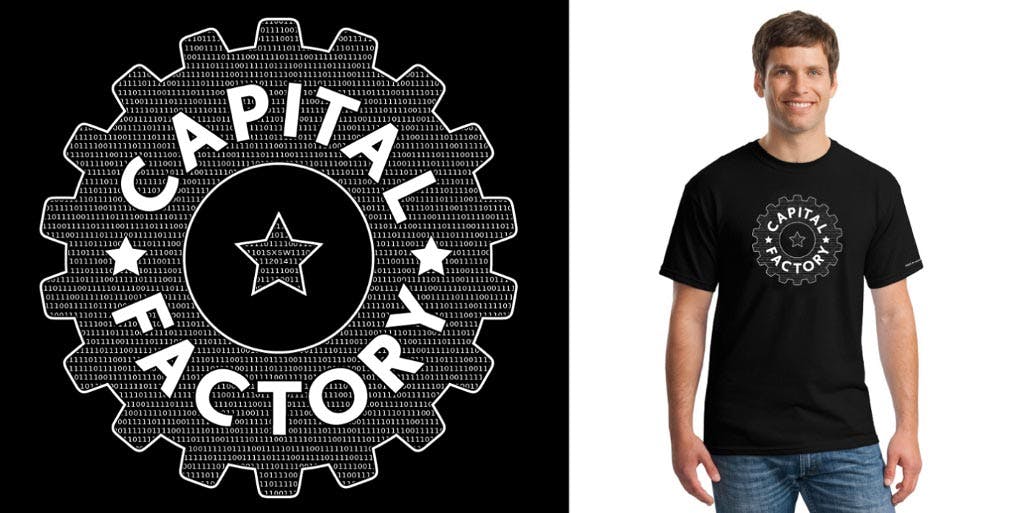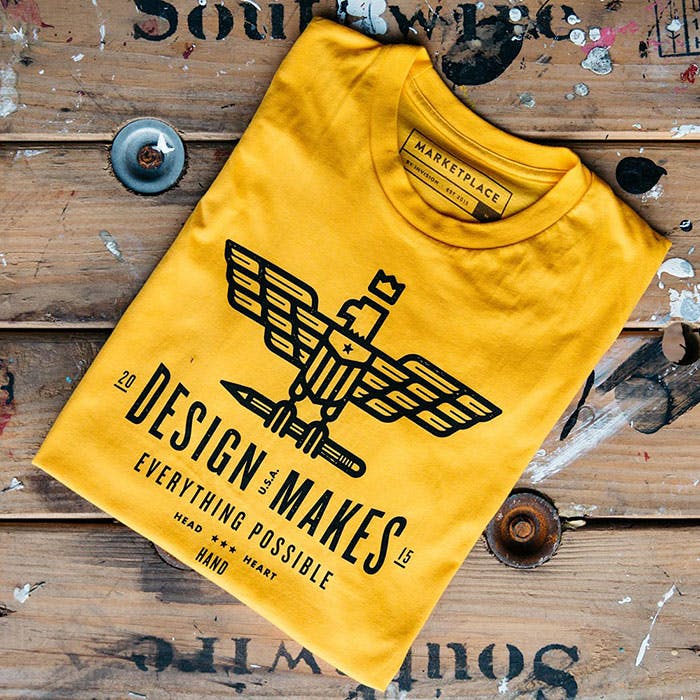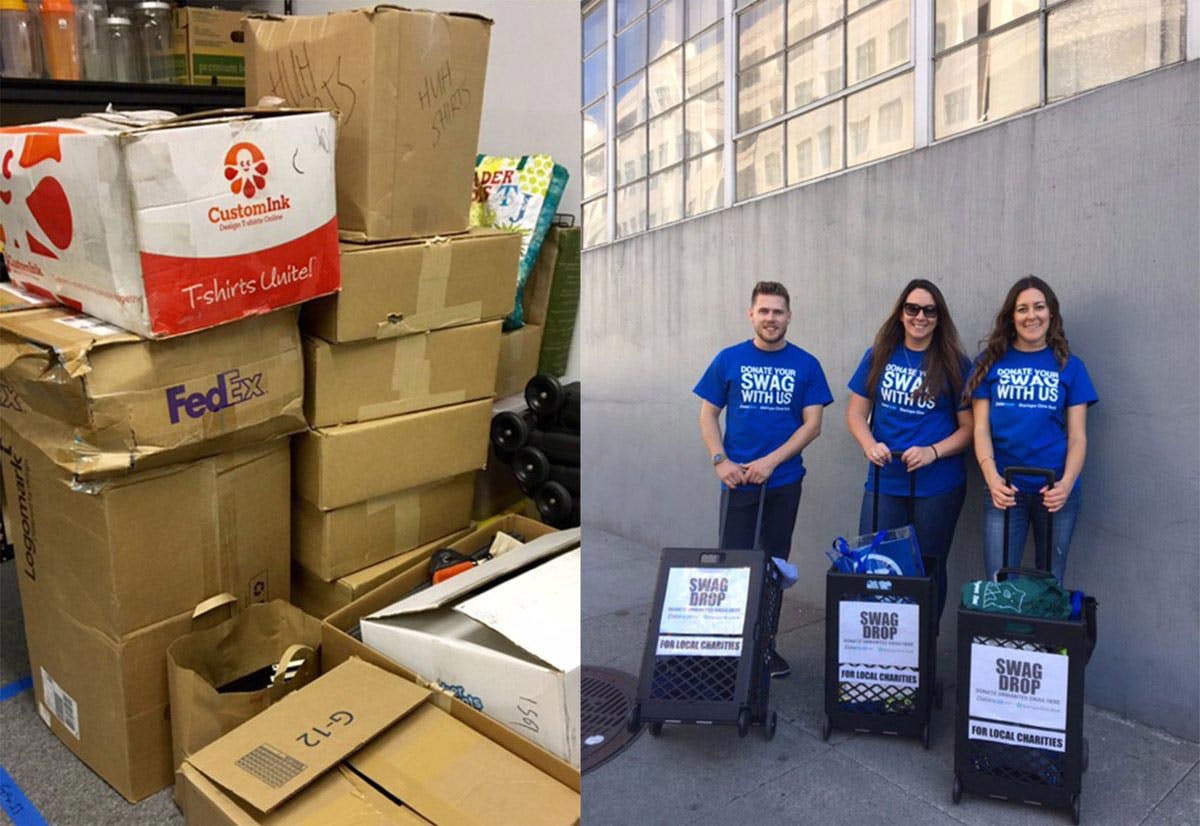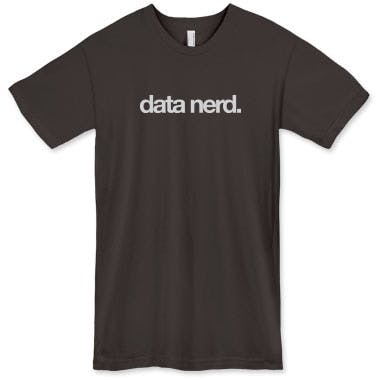How High-Quality Custom Swag Can Drive Conversions
How to make a company t-shirt that people actually want to wear.

If you’re short on key rings, low-capacity USB devices, pens, helium balloons, baseball caps and paperweights, you could go buy some. Or, you could take your pick of any upcoming conference or business event and be gifted with more than you could ever want.
Attendees at conferences are routinely offered dozens of bags of swag—branded freebies, given away in the hope of gaining some brand recognition when you drink from their cup or click their pen.
The trouble is that much of what’s given away isn’t all that interesting anymore, which means it doesn’t generate much recognition. People leave it in the hotel room, the airport, the conference center or the trashcan. When swag is just a lowest-common-denominator way to put something with a logo on it in peoples' hands, it doesn’t work. (Does anything built around that approach ever work?)
On the other hand, there’s swag that does work. If the cheap branded sticky note pad is the bottom of the swag heap—what’s at the top?
Unquestionably, branded t-shirt is the king of swag.
"At South by Southwest," says Cameron Herald, "startups have even been known to pay people to wear their t-shirts and walk around the venue."
Sujan Patel thinks t-shirt swag marketing works - and he has nearly a million dollars to back him up, generated by giving away free T-shirts.
T-shirts score in a couple of important ways.
One, they’re useful. I run out of T-shirts to wear about 100% more often than I find myself short of paperweights.
Two, they’re pleasurable. Around $2bn worth of T-shirts are sold worldwide every year; and we buy them, as Sarah Coles points out, not because we need something to wear, but ‘because we have something to say.’
There isn’t another swag item that taps into that. Other swag can put your brand on people’s kitchen table or in their hand; T-shirts can put your words in their mouth.
"Done properly," Joshua Baer explains, "one shirt can deliver tens of thousands of impressions worth thousands of dollars." But "done poorly," he cautions, "they will just get thrown in the trash and never worn — worth pretty much zero."
So, we better get it right.
The Shirt
Start with a base garment that people actually want to wear. Don't slap an excellent design (we'll get to that later) onto a shirt that feels like a cardboard box.
People value comfort over most things—and when it comes to t-shirts, it's really not that hard to give them what they want. If you want the brand recognition that comes from people wearing your shirt all over the place, you should probably make sure its a shirt that you yourself would want to wear.
My favorite question to consider: does it pass the sleep test? If your shirt isn't comfy enough to sleep in, it may not be comfortable enough to live and work in.
Another thing to consider when approaching the beginning phase of creating your company t-shirt is the ink that you use to print on it. We've all been given one of those shirts with block lettering that feels like it's made of melted plastic. It sits on top of your chest, makes you sweat, and breaks down after a few washes. Doesn't give your brand the cleanest & most polished look, that's for sure. It also makes it less likely that people will wear your shirt again and again. Printing your design with our water-based inks does the opposite—with each wash, your shirt gets softer and softer.
Not sure where to start? Our library of super-soft custom t-shirts will get you headed in the right direction.
The Design
Begin with finding branding and messaging that’s going to rattle right with the intended audience. The success or failure of a t-shirt swag campaign depends on creating a design that people actually want to wear. It doesn’t have to be complex or clever. Email biz ActionRocket’s super-simple T is working for Adam:

Still rocking the #EmailGeek T-shirt from the dudes and dudesses @ActionRocket. #email #marketing #geek #swag pic.twitter.com/P6cRjCZxTZ— Adam Maidment (@AdamLeeMaidment) May 7, 2015
That’s perfect: he likes it so much he’s tweeting it out! What could be better?!
The T-shirt design has two core jobs: 1) it has to sell the shirt to the person you’re giving it to, such that they're actually proud to wear it. And 2) it has to sell your business to people who see the shirt (or the tweet about the shirt).
The most effective designs are those that resonate with the identity and values of the people who are receiving the t-shirts. Remember, it’s a message, not a garment.
6 Tips For Killer T-Shirt Design:
Don’t make your shirts white. There’s just so much to go wrong. Bright colors or black might work better depending on your audience. White doesn’t wear well over other colors, collects dirt and stains, and makes people look larger - not what most people are looking for.
Make your design bold. Too much detail will get lost in lighting and layers, and even when people see it, they won’t know what it’s about.
Your logo might do it. It might not. Don’t feel shoe-horned in to using only your logo on the front of your shirt. Try to find something else that may resonate more, something that's searchable online for those who just happen to pass by and notice it, or something that is bound to get people talking in real time.
Focus on what you do. That’s the branding that matters to your customers and prospects. What's your value prop? Maybe put that on a shirt, to remind the people who work with you what they're pursuing, and to show potential customers how you could make their lives better.
Iterate. Consider doing annual or event-by-event T-shirt in small runs, not a single huge bulk order that you throw at everyone for years to come. Think tour shirts for bands or shows: new tour, new shirt. It’s the same concept here. If you do it well, people will be anxiously awaiting the next drop. If it’s a yearly event, consider putting the year in the design somewhere. That can be bold, or it can be an ‘easter egg’ like these from Capital Factory:
Apparently, if you look carefully, you can see ‘SXSW 2014’ in the binary code in the central star.

You know you’ve nailed design if you give shirts away at an event on Thursday and see people wearing it on Friday. Perhaps the most impressive success in this field is InVision’s swag T-shirt (As a note, we print shirts for Invision). Eschewing their logo for a design that speaks directly to their brand values, InVision created this:

One of the things it made possible was an eCommerce store devoted to selling the shirt, when demand massively outstripped supply.
The Giveaway
After creating your T-shirt swag, you have to give it away. Ideally, you want to give it away to people who will actively want to wear it.
How to do that?
Let’s start with events like conferences. Swag bags are a regular feature of conferences - so much so that sales tech company Datanyze picked up and donated more than 300lb of unwanted swag during 2016’s DreamForce conference.

.@Datanyze Collects And Donates 300 Pounds Of Unwanted Swag During Dreamforce https://t.co/SixzKb4zrE pic.twitter.com/BM0VLILcMN — Tenfold (@growtenfold) October 14, 2016
If your stuff is getting donated, it’s helping someone - but it’s not helping you.
Start with the bag. Make it stylish, make it something you might actually want to be seen carrying yourself, and design it with the same rules that you’d use to design the shirt it contains.
Remember that you’ll be competing with basically everyone else at that conference to make an impression.
Consider offering some benefit for actually wearing the shirt at the conference too: BlogDash’s David Spinks got more mileage out of 20 shirts at 2011’s SXSW than you’d think was possible, by giving them to friends who promised to wear them at least one day of the trip.
Try offering shirts to anyone who signs up or installs your app or otherwise converts. Wait till they become a customer if you want, but dropping a shirt on them when they’re still a maybe positions your brand as generous, successful and welcoming, stimulating reciprocity and generating positive feelings.
It’s working for New Relic: They started out giving shirts away to anyone who signed up. If you want one, go here. They look like this:

New Relic explicitly say’s they’re using T-shirts as an incentive to get people who should be using their tool over the ‘hump.’ ‘So far,’ writes New Relic’s Patrick Moran, ‘we’ve given a few hundred of these incentives away, and we’re not going to stop.’
Using T-shirt giveaways as incentives or collateral works for Inbound.org, who offered free T-shirts to anyone who would refer five friends to the site.
Alternatively, try the opposite: just give it away, already. Coca-Cola is making this work (but then, they can afford to): free T-shirt machines in London’s transportation hubs simply ask for a selfie hashtagged #choosehappiness in return.
Closer to home, Sujan Patel attributes $980,000 in revenue to T-shirt giveaways. Those T-shirts propelled Single Grain dramatically, though there was no complex strategy. ‘I told these people – “I don’t care whether you wear them or wash your car with them, just take a few shirts”,’ Patel told people. ‘I even donated a few to the Salvation Army.’
Picking the right strategy here is largely a matter of budget: if you have money to spend on giving away large amounts of swag the pay-off is obviously real. If you’re running a startup on a shoestring, your options may look a little bit different than Coke's do.
Conclusion
Marketing using swag does involve costs. And it’s more effective when you dedicate enough time, effort and, yes, budget, to create a shirt and campaign that will actually appeal to people and make them want to wear it. But when you do, the results can be impressive.


